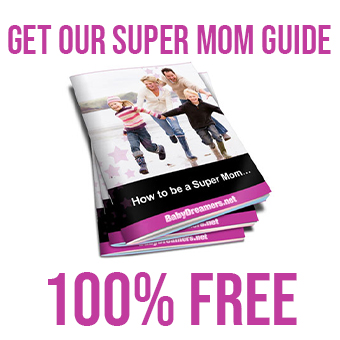In our fast-paced world, stress is nearly inevitable—yet if you’re trying to get pregnant, chronic stress can be a significant roadblock to conception. Elevated cortisol (the primary “stress hormone”) disrupts the delicate hormonal balance required for ovulation, sperm production, and implantation. The good news? With targeted strategies to manage stress and lower cortisol, you can create a more fertile internal environment. In this in-depth guide, we’ll explore:
Why stress matters for fertility
How the HPA axis interferes with reproductive hormones
Signs that stress may be hindering conception
Ten evidence-based stress-reduction techniques
Lifestyle tweaks to support hormonal balance
When—and how—to seek professional help
Integrating stress management into your TTC plan
Measuring progress: tracking stress and fertility markers
By the end, you’ll have a practical roadmap to reduce stress, harmonize cortisol, and boost your chances of welcoming a baby into your family.
Why Stress Matters for Fertility
When faced with a perceived threat—whether a looming deadline, traffic jam, or financial worry—your body activates its “fight or flight” response. The hypothalamic-pituitary-adrenal (HPA) axis releases cortisol and adrenaline to mobilize energy. In short bursts, this response is adaptive; chronically elevated cortisol, however, has unintended reproductive consequences:
In Women: Cortisol suppresses gonadotropin-releasing hormone (GnRH), limiting production of luteinizing hormone (LH) and follicle-stimulating hormone (FSH). This disruption can lead to irregular cycles, anovulation (no ovulation), or luteal phase defects that impair implantation.
In Men: High cortisol can lower testosterone levels, reduce sperm count and motility, and increase oxidative stress in sperm DNA.
Moreover, stress-driven behaviors—poor sleep, emotional eating, or reduced libido—compound hormonal imbalances, further hindering conception.
How the HPA Axis Interferes with Reproductive Hormones
Hypothalamus senses stress → releases corticotropin-releasing hormone (CRH).
Pituitary Gland responds to CRH by secreting adrenocorticotropic hormone (ACTH).
Adrenal Glands receive ACTH → produce cortisol.
Cortisol feeds back to suppress CRH and ACTH, but also inhibits GnRH, creating a hormonal tug-of-war. When cortisol remains elevated:
GnRH Pulsatility falters, disrupting LH/FSH surges needed for egg release.
Progesterone Production may be outcompeted by cortisol, shortening the luteal phase.
Thyroid Function can decline—cortisol antagonizes thyroid receptor activity, indirectly affecting fertility.
Understanding this interplay underlines why chronic stress is antithetical to reproductive success.
Signs That Stress May Be Hindering Conception
Menstrual Irregularities: Missed, shortened, or highly erratic cycles.
Low Libido: Stress often diminishes sexual desire and frequency.
Sleep Disturbances: Insomnia or non-restorative sleep fuels higher cortisol.
Weight Fluctuations: Unexplained gain or loss, especially around the midsection.
Mood Swings & Anxiety: Heightened irritability, sadness, or panic attacks.
Digestive Issues: Stress-induced gut dysbiosis can affect nutrient absorption critical for reproductive health.
If you recognize several of these symptoms, prioritizing stress management is paramount.
Ten Evidence-Based Stress-Reduction Techniques
Mindful Meditation
Practice: 10–20 minutes daily of focused breathing or body scans.
Benefit: Lowers cortisol, improves emotional regulation, and enhances prefrontal cortex function.
Progressive Muscle Relaxation (PMR)
Practice: Systematically tense and release major muscle groups over 10–15 minutes.
Benefit: Reduces muscular tension and signals parasympathetic activation.
Guided Imagery/Visualization
Practice: Envision a calming scene (beach, forest) for 5–10 minutes.
Benefit: Activates relaxation pathways and interrupts stress loops.
Gentle Yoga or Tai Chi
Practice: 20–30 minutes 3–5 times per week of restorative postures or slow flow.
Benefit: Balances HPA axis, improves circulation to reproductive organs, and fosters mind-body connection.
Nature Exposure (Forest Bathing)
Practice: 30–60 minutes walking in green spaces without digital distractions.
Benefit: Lowers cortisol and blood pressure; boosts parasympathetic tone.
Breathwork (4-7-8 Technique)
Practice: Inhale 4 seconds, hold 7 seconds, exhale 8 seconds, repeat for 5 cycles.
Benefit: Rapidly shifts you out of sympathetic “fight or flight” mode.
Journaling & Cognitive Reframing
Practice: 10 minutes of free journaling each morning; challenge negative thoughts with evidence-based reframes.
Benefit: Clarifies stressors, reduces rumination, and fosters resilience.
Social Connection & Laughter
Practice: Schedule weekly catch-ups or joyful activities with supportive friends/family.
Benefit: Oxytocin release counters cortisol, strengthens social bonds, and uplifts mood.
Aromatherapy with Lavender or Chamomile
Practice: Diffuse essential oils in bedroom or apply diluted topically before sleep.
Benefit: Modestly reduces stress and improves sleep quality.
10. Digital Detox
Practice: Designate 1–2 hours screen-free before bedtime; take social-media breaks.
Benefit: Reduces blue-light disruption of circadian rhythm and decreases information overload.
Combine several techniques daily to build a robust stress-management toolkit.
Lifestyle Tweaks to Support Hormonal Balance
A. Prioritize Sleep Hygiene
Consistent Schedule: Sleep and wake within a 30-minute window.
Environment: Cool (16–18 °C), dark, and quiet; use blackout curtains and white noise if needed.
Wind-Down Routine: 30 minutes of reading, gentle stretching, or meditation; no screens.
B. Nutrient-Dense, Anti-Inflammatory Diet
Omega-3 Fatty Acids: Fatty fish or algae supplements reduce inflammation.
Magnesium & B-Vitamins: Leafy greens, nuts, seeds, and whole grains support neurotransmitter production.
Limit Caffeine & Alcohol: Both elevate cortisol—keep caffeine under 100 mg/day and alcohol to occasional small servings.
C. Regular, Moderate Exercise
Balance: 150 minutes/week of moderate activity (walking, cycling) plus 2 strength sessions.
Avoid Overtraining: High volumes of intense exercise can spike cortisol; listen to your body.
D. Time Management & Boundaries
Delegate Tasks: Share responsibilities at work and home.
Say “No” When Needed: Reduce overcommitment to lower chronic stress load.
Schedule Self-Care: Block out time for relaxation just as you would appointments.
When—and How—to Seek Professional Help
If stress remains unmanageable despite self-care:
Registered Fertility Counselor or Psychologist: Specializes in the emotional aspects of infertility and can teach cognitive–behavioral strategies.
Integrative Medicine Practitioner: May offer acupuncture, herbal support (e.g., ashwagandha), and mind–body modalities to balance cortisol.
Medical Evaluation: Screen for adrenal fatigue, thyroid dysfunction, or sleep disorders (e.g., sleep apnea) that can masquerade as stress.
Early intervention can prevent stress from undermining months of fertility work.
Integrating Stress Management into Your TTC Plan
Action Steps |
————————————————————–|
Establish baseline stress levels via journaling and salivary cortisol test. |
Daily morning meditation; avoid evening caffeine; incorporate gentle yoga. |
Reduce intense activity; prioritize sleep; practice breathwork before intercourse to center yourself. |
Evening PMR; aromatherapy at bedtime; mindful journaling to track mood and symptoms. |
Light nature walks; restorative yoga; extra social or self-care activities to buffer mood shifts. |
Adapting techniques to each cycle phase ensures targeted support when your body needs it most.
Measuring Progress: Tracking Stress and Fertility Markers
Daily Stress Journal: Note perceived stress (1–10), which techniques you used, and mood changes.
Salivary Cortisol Testing: Optional at-home kits can measure morning and evening levels to show downward trends.
Cycle Tracking: Monitor ovulation timing, luteal phase length, and any improvements in cycle regularity.
Sexual Function & Frequency: Note libido and comfort during intercourse, which often improve as stress lowers.
Celebrating small wins—longer sleep, calmer mornings, more consistent cycles—builds momentum toward your conception goals.
Frequently Asked Questions
How quickly can stress reduction improve fertility?
Many women notice more regular cycles and improved cervical mucus within 1–2 cycles of consistent stress management; sperm quality improvements in men may take 2–3 months to reflect reduced cortisol.
Can meditation replace medical fertility treatments?
No—while meditation powerfully supports hormonal balance, it complements rather than replaces medical interventions (e.g., ovulation drugs or IVF). Integrate mind–body practices alongside your fertility care plan.
What if I don’t have time for lengthy sessions?
Even 2-minute micro-breaks of deep breathing or a quick walk down the hall can lower cortisol. Consistency matters more than duration.
Are all forms of exercise beneficial for stress and fertility?
Moderate aerobic and strength training help, but avoid excessive high-intensity or endurance workouts, which can raise cortisol and suppress ovulation.
Can adaptogenic herbs like ashwagandha help?
Yes—ashwagandha (300–500 mg/day) and rhodiola (200–400 mg/day) have research supporting cortisol modulation. Always consult your healthcare provider before starting new herbs.
Is cortisol testing necessary?
Not always. If you have clear stress symptoms and cycle irregularities, you can begin self-care first. Cortisol testing can be helpful if standard interventions fail or if you suspect adrenal dysfunction.
How does sleep affect cortisol and fertility?
Poor sleep elevates cortisol, disrupts GnRH, and can shorten your luteal phase. Prioritizing 7–9 hours of quality rest is essential for hormonal balance and conception.
What if stress is coming from fertility treatment itself?
Treatment-related anxiety is common. Seek a fertility counselor or join support groups—sharing experiences can reduce isolation and teach coping strategies tailored to the IVF/IUI journey.
—
Managing stress and cortisol is a powerful lever in your fertility toolkit. By weaving evidence-based techniques—meditation, movement, nutrition, and professional support—into your daily routine, you’ll create a calmer internal environment where hormones can flourish and conception becomes more attainable. Stress less, conceive more: your body and mind will thank you.










